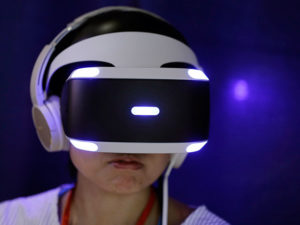 Already, several experts said, too many VR startups and developers are putting out shoddy or nauseating demos, thereby shooting themselves—and potentially the whole industry—in the foot. Customers turned off by those demos may never return, leaving VR to go the way of 3-D TV.
Already, several experts said, too many VR startups and developers are putting out shoddy or nauseating demos, thereby shooting themselves—and potentially the whole industry—in the foot. Customers turned off by those demos may never return, leaving VR to go the way of 3-D TV.
Natacha Merritt, director of VR for WestSummit Capital, adds that startups in this highly-competitive space hoping to boost their chances of funding should recruit candidates that reflect the diversity of their potential users. Her firm, which counts only three female co-founders in a pipeline of 200 companies, has begun to prioritize meetings with female founders. “It’s a big red flag when I see a [presentation] screen with a board of 10 white males,” she said.
However, there is a downside—eye tracking adds 8 milliseconds to motion-to-photon latency, or the time it takes to update a screen following a user’s movements. VR requires a motion-to-photon latency of under 20 ms to keep users from getting sick or disoriented, so an 8 ms delay would eat up nearly half of that time.
See the full story here: http://spectrum.ieee.org/tech-talk/consumer-electronics/gadgets/can-you-see-it-the-future-of-virtual-and-augmented-reality?utm_source=feedburner&utm_medium=feed&utm_campaign=Feed%3A+IeeeSpectrum+(IEEE+Spectrum)